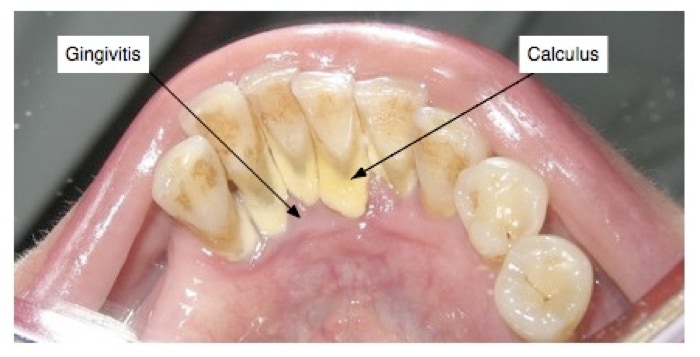-
HOME
-
ABOUT
-
WHY CHOOSE US
-
TREATMENTS
-
FEES
-
CONTACT
-
FAQS
PLAQUE & CALCULUS

Dental plaque is a usually pale yellow coloured film of bacteria and food debris that builds up on the teeth. If not removed regularly, it can lead to gum inflammation (gingivitis), tooth decay and periodontal disease.
The bacteria present in dental plaque are all naturally present in the oral cavity, and are normally harmless. However, failure to remove plaque by regular tooth brushing means that they are allowed to build up in a thick layer. Those bacteria nearest the tooth surface convert food particles to acids which damage the adjacent tooth surface leading to tooth decay (caries). Saliva can’t penetrate the build-up of plaque to neutralise the acid and damage produced by the bacteria.

Plaque accumulation also causes the gingivitis (gum disease) in which the gums become irritated and inflamed. Gingivitis can be recognized as the gums take on a more crimson colour, and tend to bleed very easily, especially when being brushed. When the gingiva become so irritated, damage can occur to the bone that surrounds the tooth; this is known as periodontal disease. Plaque that remains undisturbed on the teeth for more than 24 hours, starts to calcify to become calculus (tartar). Calculus is harmful to gingival health and can’t be removed with a toothbrush. In addition, it has a rough surface, which allows attachment of more plaque bacteria as well as stains easily.
Calculus formation can result in a number of clinical problems, including bad breath, receding gums and chronically inflamed gingiva.
TOOTH STAIN & DISCOLOURATION

Discolouration of teeth can result from a number of sources, and are divided into extrinsic (on the surface of the tooth), or intrinsic (incorporated into the structure of the tooth). Extrinsic stains include:
Intrinsic causes:
Generally extrinsic stains can be removed by the dental hygienist. Within our practice, our surgeries are equipped with air polishing equipment. These direct a fine spray of water, air and cleaning powder to gently remove stain on and around the teeth, leaving them smooth, and clean.
Some intrinsic stains, such as those caused by amalgam, can be cleaned away when the amalgam filling is removed, but those incorporated into the teeth during development can only be masked by covering the teeth, for example with crowns and veneers. Please do ask us if you have any discolourations on your teeth that you would like removed, and we will discuss the possible solutions.
CONTACT US TO BOOK OR FOR MORE INFORMATION
This website makes use of cookies. Please see our privacy policy for details.
OK